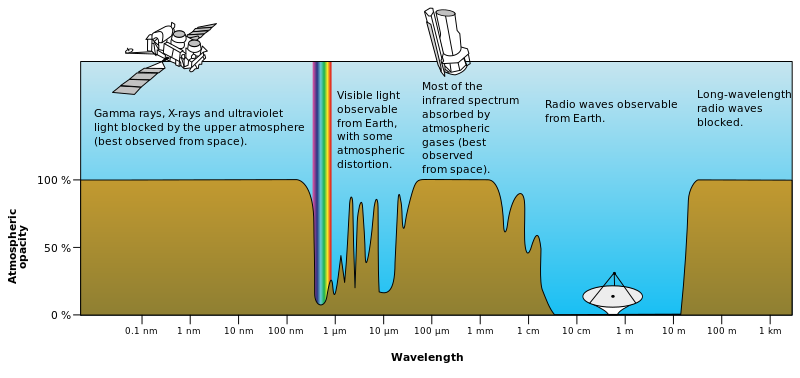The quick brown fox jumps over the lazy dog.
There are 26 characters in the English language and that sentence uses every one.
The digital world uses two characters: 1 and 0. My fingers press buttons on a keyboard and it's translated into the language computers speak: on and off, go and stop. Electrons shift in a strip of metal.
But it doesn't end there.
Communication over distances takes many forms. A lot happens to those 1's and 0's before becoming letters and words again wherever you are. A laser shining into a fiber of glass, and then a tiny transmitter emitting energy right into the air.
Isn't that amazing?
Data is all around you.
Energies of particular frequencies can travel easily through the atmosphere. This is the radio frequency band, which spans kHz to GHz range.
There are 26 characters in the English language and that sentence uses every one.
The digital world uses two characters: 1 and 0. My fingers press buttons on a keyboard and it's translated into the language computers speak: on and off, go and stop. Electrons shift in a strip of metal.
But it doesn't end there.
Communication over distances takes many forms. A lot happens to those 1's and 0's before becoming letters and words again wherever you are. A laser shining into a fiber of glass, and then a tiny transmitter emitting energy right into the air.
Isn't that amazing?
Data is all around you.
Energies of particular frequencies can travel easily through the atmosphere. This is the radio frequency band, which spans kHz to GHz range.
In wavelength, the radio band spans waves a millimeter to a full kilometer long, peak to peak. That's long enough to easily travel through walls too.
Humans discovered long ago how to generate and manipulate or 'modulate' radio waves to carry information. Amplitude modulation (AM) or frequency modulation (FM) are a few examples.
These days, there is a LOT of data in the radio frequency band besides AM and FM radio, including broadcast tv, cell phones, bluetooth, and satellite communication. It's all carefully allocated and regulated by the FCC. (Check out this awesome chart.)
But some say the radio frequency is getting crowded.
They say there's another option.
They say we can transmit data using a different frequency range. And it happens to correspond to wavelengths your human eyeballs perceive as LIGHT.
In his TED talk on Visible Light Communication, Professor Harald Haas coined the term Li-Fi. It's like Wi-Fi but it uses visible light from an LED to transmit data.
Because LEDs are made of semiconductors, the stuff computers are made of, they can be easily modulated to transmit data through the air.
You could think of it like a strobe light spelling out words in Morse code, only really fast. Fortunately the human eye is slow, so a light flashing on and off faster than 60 times a second looks the same as "on."
The only problem with Li-Fi is it can't go long distance and can't go through walls. Because physics. But for research funding reasons, you could easily call it a security feature, not a limitation. :)
LEDs are awesome, yet again.
More info:



Great post! Thanks
ReplyDelete